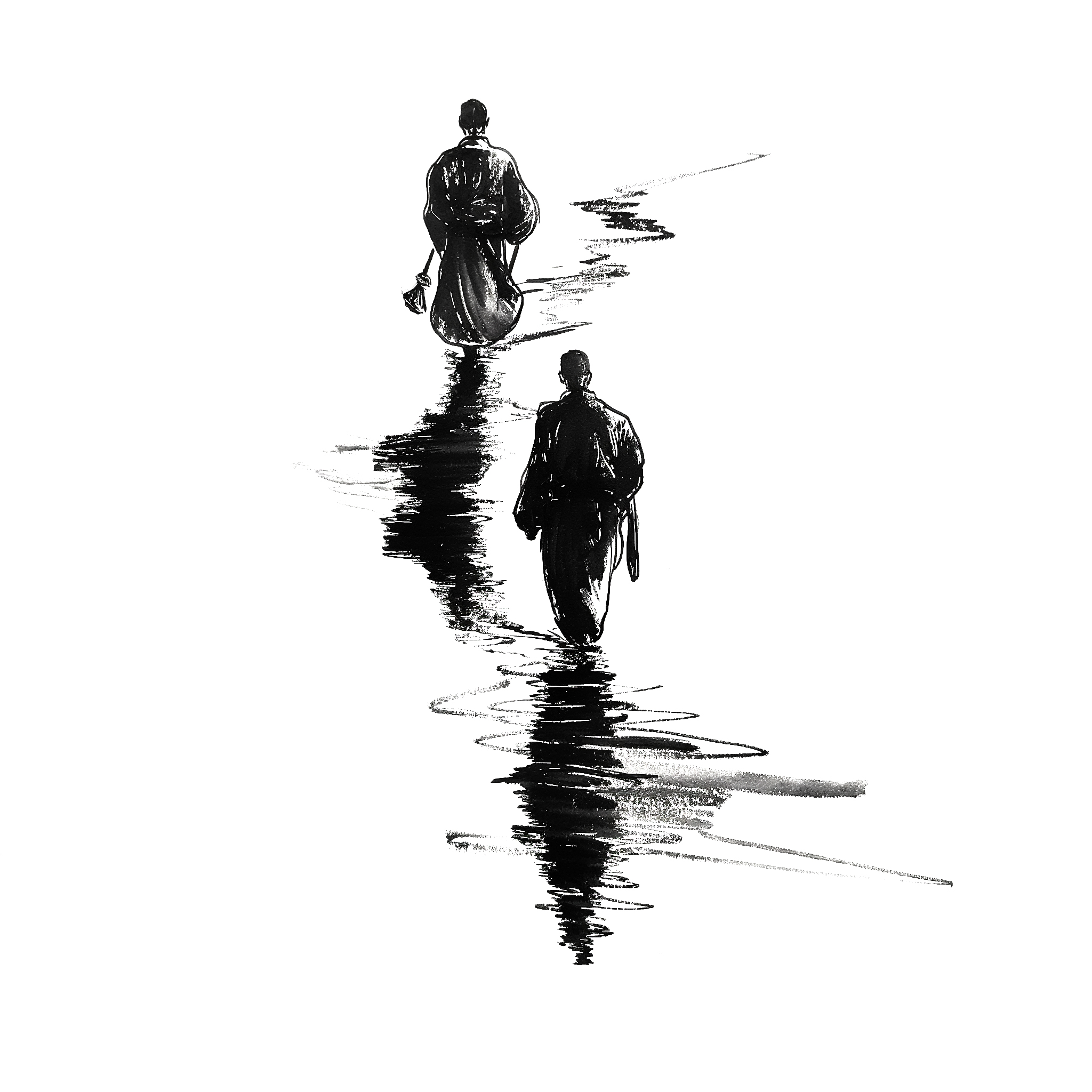Menu



Menu




"True wisdom is not in blind adherence to rules, but in understanding when to bend them for the greater good!"
-steanART
Two monks were traveling together, journeying on a dusty road towards a distant monastery. One was an older, seasoned monk with years of meditation and discipline etched into his demeanor. The other was a younger monk, eager to learn and full of youthful vigor. Their path led them to a wide river, its current swift and treacherous.
As they approached the riverbank, they saw a woman standing there, distressed and unable to cross. She was finely dressed, clearly unprepared for the arduous task of wading through the rushing waters. According to the monastic code, monks were forbidden to touch women, a rule meant to preserve their spiritual purity and focus. The woman, however, was in genuine need, and her predicament could not be ignored.
Without a moment’s hesitation, the younger monk stepped forward. He offered the woman his help, lifted her onto his back, and carried her across the river. The older monk followed, watching in silent disapproval. Once they reached the other side, the younger monk set the woman down gently, and she thanked him profusely before continuing on her way.
The two monks resumed their journey. Miles passed in silence, the older monk brooding over what had transpired. He could no longer contain his frustration and eventually said, “Brother, how could you carry that woman? You know we are not supposed to touch women!”
The younger monk looked at his companion, puzzled but calm. He replied, “Brother, I set her down on the other side of the river. Why are you still carrying her?”
This story holds within it layers of wisdom, revealing truths about rules, compassion, and the burdens we choose to bear. The younger monk’s actions demonstrate that sometimes, the spirit of a rule is more important than its letter. In his decision to help the woman, he showed that compassion and kindness can require us to bend rigid principles. His act was not one of defiance but of pure intent to do good, even if it meant stepping outside the conventional boundaries.
The older monk’s reaction, on the other hand, illustrates how clinging to rules without understanding their deeper purpose can cloud judgment and create unnecessary suffering. His inability to move past the incident, even after the woman was no longer present, highlights how we often carry mental burdens long after the physical moment has passed. This attachment to the past can weigh us down, preventing us from experiencing the present fully and hindering our spiritual growth.
Furthermore, the younger monk’s serenity and the older monk’s agitation show a contrast in mindfulness. The younger monk, having acted out of compassion, was at peace with his decision. He lived in the moment, helping where help was needed and then moving on without lingering guilt or doubt. The older monk, however, was trapped in his thoughts, unable to release the incident from his mind. This reflects a common human experience: how we can allow our minds to dwell on perceived wrongs or mistakes, creating suffering where none is necessary.
Ultimately, this tale invites us to reflect on our own lives and the rules we follow. Are we adhering to them blindly, or do we understand their purpose and allow room for compassion and common sense? It also encourages us to let go of past actions and their associated judgments, freeing ourselves from unnecessary burdens. In doing so, we can live more fully in the present, with a heart open to kindness and a mind free from needless worry.
In the end, the story of the two monks and the woman by the river teaches us that wisdom lies not just in following rules but in understanding when to bend them for the greater good. It reminds us to lay down the burdens of the past and to embrace the present with a clear mind and a compassionate heart.
